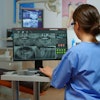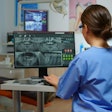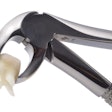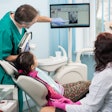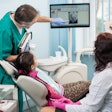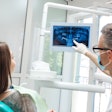
Artificial intelligence (AI) can increase dentists' diagnostic accuracy but may also increase invasive treatment decisions, according to a study on the use of AI for caries being published in the December issue of the Journal of Dentistry.
The increase in sensitivity enabled by the use of AI was demonstrated in enamel caries but not early or advanced dentin lesions, concluded the authors, led by Sarah Mertens of the department of oral diagnostics at Charité University Medicine Berlin.
"It seems that for early lesions, computer vision-based pattern recognition systems help the dentist to spot minute changes, while for more obvious changes, dentists do not benefit from such support," the group wrote (J Dent, December 2021, Vol. 115, 103849).

Testing the benefits of AI
To test whether AI can increase dentists' diagnostic accuracy in detecting caries in the enamel, the researchers conducted a cluster-randomized crossover controlled trial involving 22 dentists detecting caries on 20 bitewings chosen at random from a pool of 140 bitewings.
For 10 of the bitewings, the dentists detected caries manually. For the other 10 bitewings, the dentists were supported by a commercially available AI package, dentalXrai Pro, which employs an AI algorithm for caries detection. In the AI group, dentists were allowed to enable or disable the AI augmentations in the bitewing viewing software as needed.
Three categories of caries were examined: enamel, early dentin (not extending deeper than the outer third of the dentin), and advanced dentin (extending deeper than one-third).
For each caries lesion, the researchers assessed the dentists' accuracy of detection and their treatment decisions, which were divided into four categories: no treatment, noninvasive (e.g., fluoride varnish), microinvasive (e.g., caries infiltration), or invasive (e.g., restoration).
Dentists using AI had a higher mean area under the receiver operating characteristic curve than those without AI (p < 0.05). This was mainly due to significantly higher sensitivity (p < 0.05) when using the AI system, according to the authors.
Overtreatment of patients
With respect to treatment decisions, the study showed that the use of AI tended to shift the decisions toward the more invasive end of the spectrum. In the case of enamel caries, the use of AI produced a general shift from no therapy to noninvasive therapy (from 32% to 36% of decisions) and invasive therapy (from 17% to 24%, p < 0.05). Similarly, for early dentin caries, there was a shift toward invasive therapies (from 55% to 66%, p < 0.05).
Previous research had shown that dentists often recommend invasive treatment even when the situation does not necessarily warrant it. Adding AI to the mix may exacerbate this behavior by increasing the risk of type I errors (false positives) and overtreatment of patients, the authors noted.
"Industry should consider supporting evidence-based decision making by providing treatment recommendations for each detected lesion according to its depth," they wrote, suggesting this as a way to channel the higher sensitivity enabled by AI into better, but not necessarily more invasive, care.
"Differences in the effects of AI for different dentists should be explored, and dentists should be guided as to which therapy to choose when detecting caries lesions using AI support," the authors concluded.



